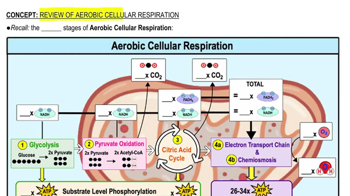Multiple Choice
Which of the following is a correct description of the events of cellular respiration in proper sequence?
3132
views
 Verified step by step guidance
Verified step by step guidance Verified video answer for a similar problem:
Verified video answer for a similar problem:



 3:38m
3:38mMaster Introduction to Cellular Respiration with a bite sized video explanation from Bruce Bryan
Start learning